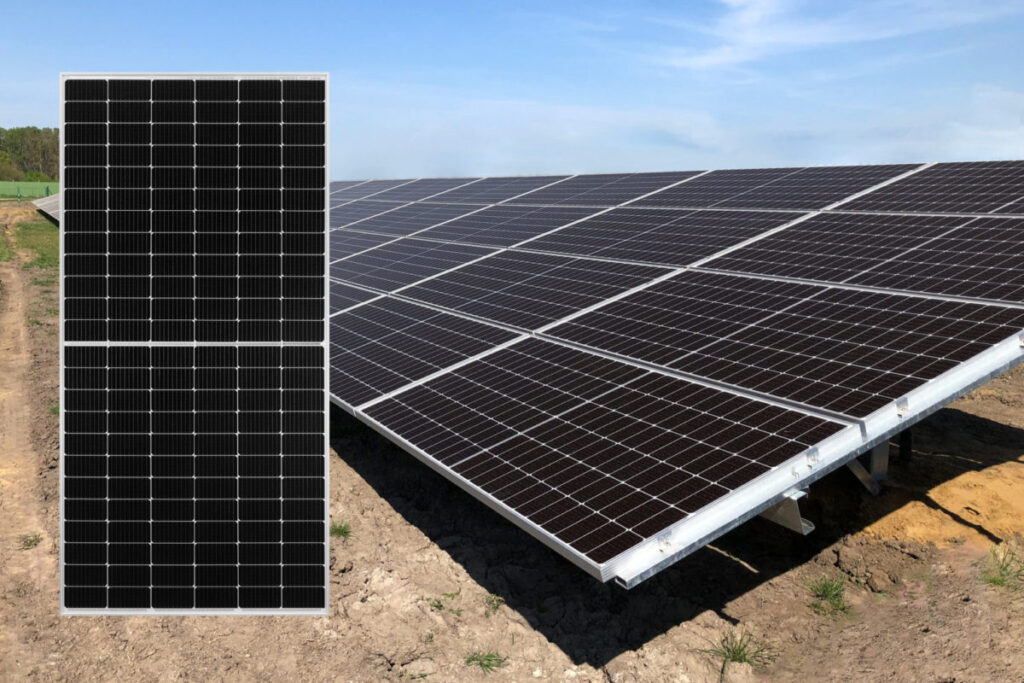In solar panel technology, “half-cut” refers to a design innovation that involves dividing solar cells into two halves and then connecting them in series. This approach creates smaller, interconnected cells within a standard-sized solar panel. In essence, a full-size solar cell is sliced in half, and the resulting two halves are electrically connected in a specific configuration.
The main characteristic of half-cut solar panels is that they have a reduced current-carrying capacity per cell compared to traditional full-sized solar cells. However, this design offers several advantages:
- Lower resistive losses
By dividing the cells into smaller halves, the current passing through each cell is reduced. This results in lower resistive losses within the solar panel, leading to improved efficiency and higher energy output, especially in high-temperature conditions.
- Improved shade tolerance
When a portion of a solar panel is shaded, its overall output is significantly affected. Half-cut solar panels perform better under partial shading because only the affected half of the cells experiences a drop in current, while the other half continues to produce electricity.
- Lower module operating temperature
The reduced current in each cell results in lower heat generation, which leads to lower operating temperatures of the solar panel. Cooler panels typically have higher efficiency and a longer lifespan.
- Enhanced reliability
The interconnection between the half-cut cells helps to distribute stress more evenly across the panel, reducing the risk of cracking or damage to individual cells. This can contribute to improved long-term reliability.
- Potential for higher voltages
Due to the series connection of half-cut cells, solar panels made with this technology may have higher voltage output, which can be advantageous in certain system designs.
It’s important to note that half-cut solar panels are not a completely new type of solar cell technology; rather, they are a manufacturing variation applied to various solar cell types like monocrystalline and polycrystalline. This design has gained popularity in recent years due to its advantages in performance and reliability, especially in large-scale solar installations.
As with any solar panel technology, the overall performance of half-cut solar panels depends on various factors, including the quality of the materials used, manufacturing processes, and the specific environmental conditions in which they operate. Always consider factors like efficiency, power output, and warranty when evaluating different solar panel options for your project.


